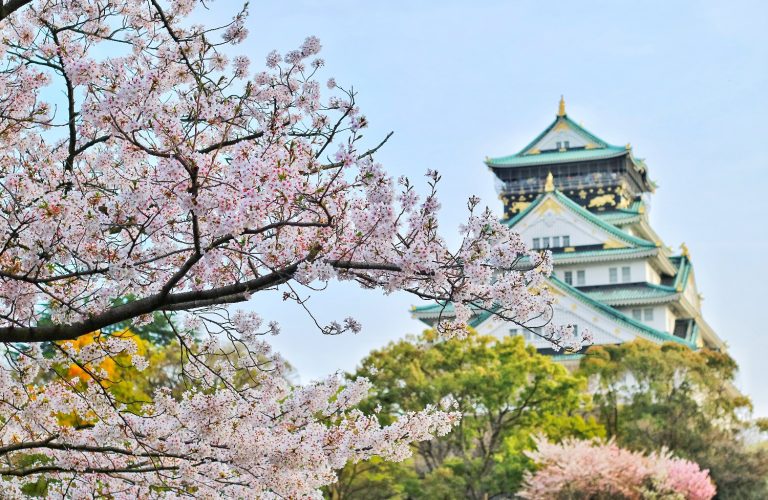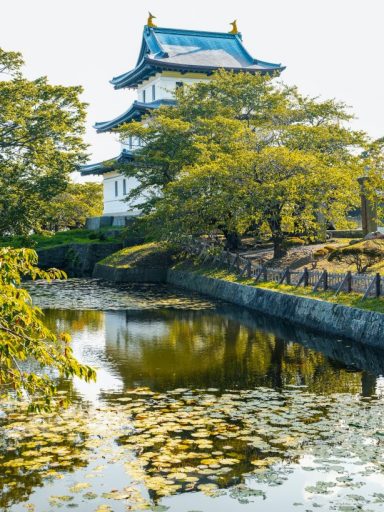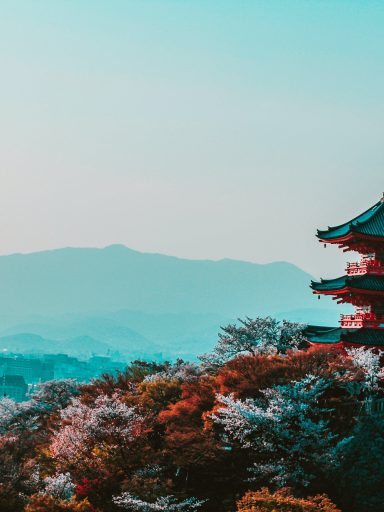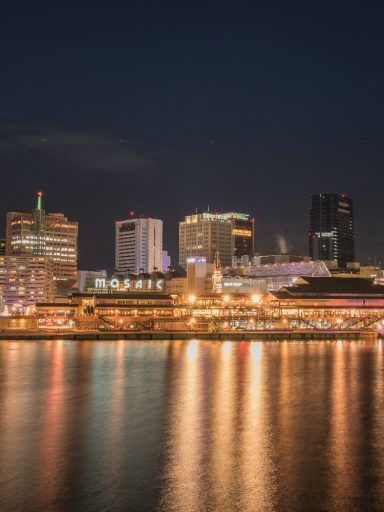Religion
The main religions in Japan are Shintoism and Buddhism, and many Japanese consider themselves believers in both. Most Japanese, for example, will marry in a Shinto ceremony, but when they die, they’ll have a Buddhist funeral. A native religion of Japan, Shintoism is the worship of ancestors and national heroes, as well as of all natural things, both animate and inanimate. These natural things are thought to embody gods and can be anyone or anything – mountains, trees, the moon, stars, rivers, seas, fires, animals, rocks, even vegetables. Shintoism also embraces much of Confucianism, which entered Japan in the 5th century and stressed the importance of family and loyalty. There are no scriptures in Shintoism, nor any ordained code of morals or ethics. The place of worship in Shintoism is called a jinja, or shrine. The most famous shrine in Tokyo is Meiji Shrine. Of the various Buddhist sects in Japan today, Zen Buddhism is probably the most well known in the West. Considered the most Japanese form of Buddhism, Zen is the practice of meditation and a strictly disciplined lifestyle to rid yourself of desire so that you can achieve enlightenment. There are no rites in Zen Buddhism, no dogmas, no theological conceptions of divinity. You do not analyze rationally, but rather know things intuitively. The strict and simple lifestyle of Zen appealed greatly to Japan’s samurai warrior class, and many of Japan’s arts, including the tea ceremony, arose from the practice of Zen.
Architecture
Tokyo is home to extraordinary architecture that fascinates through its blend of traditional values and high-tech expression. The 1923 earthquake and the bombardments of World War II dramatically influenced the image of the city and its architecture, giving rise to modern urban environments with complex infrastructure. The Japanese capital constitutes the most populated metropolitan area in the world, housing 33 million inhabitants. Divided into 23 wards and numerous neighborhoods, the city features a diverse blend of atmospheres and urban fabrics that support an amalgamation of architectural typologies. The following list showcases 30 iconic modern and contemporary buildings that will provide a good starting point for your first visit to Japan’s largest city, including works from renowned architects such as Nikken Sekkei, Herzog & De Meuron, Toyo Ito, Kengo Kuma, Sou Fujimoto, Kenzo Tange, OMA, and Kazuyo Sejima.
Tourist Attractions
Tokyo is one of the world’s most exciting destinations for tourists. The city features a wide range of both local and regional Japanese cuisine in addition to all types of international fare. Its top restaurants have accrued more Michelin stars than both Paris and New York combined. But good food can be found at every price range from cheap hole-in-the-wall joints to expensive high-class restaurants with every budget in between. Tokyo is also home to many cultural attractions, including the Imperial Palace, Meiji Shrine, and Sensō-ji, a popular temple. Many tourists, particularly foreigners, visit Tsukiji Fish Market. Contrary to a common misconception, Tokyo has many green spaces in the city center and its suburbs .
Cuisine
Tokyo is one of the world’s most exciting dining destinations. The city features a wide range of both local and regional Japanese cuisine in addition to all types of international fare. Its top restaurants have accrued more Michelin stars than both Paris and New York combined. But good food can be found at every price range from cheap hole-in-the-wall joints to expensive high-class restaurants with every budget in between. As Japan’s political center for over four centuries, Tokyo has naturally exerted great influence on Japanese cuisine. Consequently, some Tokyo specialties have become so popular that they are now known as the standard version of the dish rather than a local specialty. Local creations from Tokyo (formerly called Edo) are often referred to as “Edo-mae,” literally meaning “in front of Edo,” in reference to Edo Bay (now Tokyo Bay) which provided the city with its local seafood. The following are some popular Tokyo specialties: Nigiri-zushi, Tempura, Soba, Chankonabe, and Monjayaki.
Conclusion
Tokyo is a city that offers something for everyone. From its rich history and culture to its modern architecture and cuisine, there is no shortage of things to see and do. Whether you’re interested in visiting the city’s many temples and shrines, exploring its green spaces, or sampling its world-renowned cuisine, Tokyo is sure to leave a lasting impression on you.



